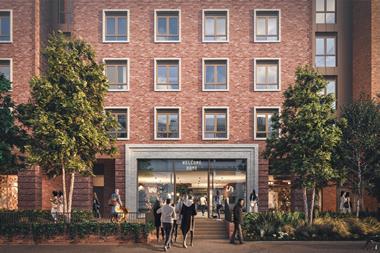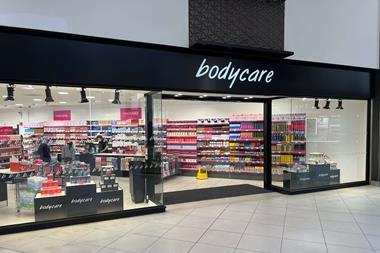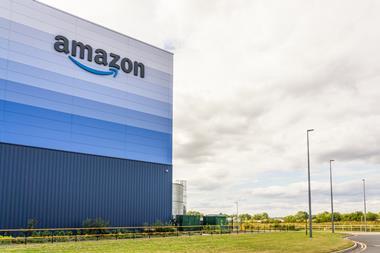There was a time when most retailers owned their property. Nowadays, a big freehold portfolio is largely the preserve of supermarkets, which own roughly 80 per cent of their properties. But while they guard the flexibility of their portfolios, deals by Tesco and Sainsbury’s this year have shown that even they are prepared to consider exploiting its value.
The supermarkets are coming round to the idea that they can make the most of their assets while not compromising on the flexibility to run their stores. Last month’s sale and leaseback by Sainsbury’s of four of its depots for£191 million, was a reminder of just how valuable an exercise it can be.
A sale-and-leaseback deal used to be seen as the last refuge of a struggling retailer. The need to release a large chunk of capital at the expense of long-term equity only came about when times were hard. But, over the past decade, sale and leasebacks have gone from being viewed as a desperate measure to a shrewd manoeuvre, cashing in on vast reserves of capital stored in bricks and mortar.
The increasing number of private equity companies wanting to turn inefficient retailers around and make capital work harder has meant that sale-and-leaseback deals have become more commonplace. However, while it appears to be a straightforward transaction with obvious benefits, there’s usually something lost and something gained.
But it is possible to get the best of both worlds if the deal is structured through a joint venture. The sale and leaseback of a share in a property while retaining the rest of it ticks all the boxes for a retailer. It still provides the cash injection, but allows a tenant to keep a controlling stake and retain the control it needs for day-to-day operational flexibility.
“It’s about using property to maximise a retailer’s value,” says Geoffrey Silman, a consultant at law firm Finers Stephens Innocent. “If you want to expand in the UK and you release cash through sale and leasebacks on five of your freeholds, OK you have to pay rent on them, but you might have enough cash to take leaseholds on another five.”
When Sir Terry Leahy came out last month to bask in the warmth of Tesco’s record£2.8 billion profits, he highlighted the value of sale and leaseback deals – such as the£207 million deal with Prudential that the retailer completed in February – as a pillar of his long-term strategy. Leahy plans to release and reinvest£5 billion from Tesco’s property stock to fund growth at home and abroad. Putting the value of property in clear perspective, Leahy explained that the cash generated through the sale of a 50,000 sq ft (4,645 sq m) UK store could fund a 500,000 sq ft (46,450 sq m) Tesco-anchored shopping centre in China.
You only have to look at some of the names benefiting from sale and leasebacks in the past 10 years and the capital that has been generated by these deals to understand why it is such a widespread exercise. In 2005, Boots released£298 million through sale-and-leaseback deals on 312 of its high street stores, while Tesco made£636 million by selling 12 of its high street stores to Vincent Tchenguiz, brother of Sainsbury’s shareholder Robert.
Money, money, money
The primary reason for a retailer to sell and leaseback its stores is very simple: money. Potentially huge levels of capital might be tied up in property that is not doing very much and, for retailers, a sale represents one of the few ways that large quantities of cash can be released to fund capital expenditure, corporate restructuring or mergers and acquisitions. Deloitte head of retail Tarlok Teji explains: “You do a sale-and-leaseback deal because you want to get your hands on some cash. A lot of UK retailers are sitting on some quality assets.”
Another advantage for a retailer is that, by relinquishing part or all of its stake in the sites it occupies, it can insulate itself against predatory takeover attempts by companies with more interest in increasing capital value than transforming the fortunes of the retail business itself. This has been seen in many instances, particularly since the rise of private equity.
At the heart of Delta Two’s attempts to take over Sainsbury’s last year was the retailer’s hugely valuable freehold portfolio. The Qatari investors and fellow shareholder Robert Tchenguiz both wanted to sell the property to realise its value, but the board felt this would compromise flexibility.
Savills head of high street investment Jeremy Lovell says: “If a retailer does keep its freeholds, it can become a victim of predatory bids from investment companies. Sir Philip Green would have had the opportunity to sell a large amount of property, had the Marks & Spencer deal gone through. The property element would have been a crucial aspect of the bid.”
But with the commercial property market tumbling, is this the time to be selling? The volume of deals has slowed as bank finance becomes harder to obtain, but buildings let to well-known retailers remain attractive to buyers because they offer strong income streams.
“The commercial property market is coming down and it’s possible that real estate value might come down as well,” says Teji. “ We’re looking at millions of square feet coming onto the market in the next year and now might be a smart time to shift some of your property and get the cash – particularly if you’re looking into international expansion. A lot of retailers are looking at their portfolios at this time and thinking about cost-cutting.”
While it may be a shrewd move, which the majority of retailers have made, a sale and leaseback can be a double-edged sword. It very much depends on the retailer as to how successful an exercise it can be, because, to an investor, the value of the property depends heavily on the tenant.
A site that is occupied by a top-drawer supermarket retailer, such as Sainsbury’s or Tesco, will be very attractive to an investor, because of the value that it brings and the high footfall that it pulls in from the surrounding catchment.
However, supermarket retailers are an exception. Other retailers may be less attractive as covenants – particularly in the present climate – and this might involve compromising the price. If the buyer doesn’t expect your company to be around in 25 years, a deal will be harder to come by.
In order to gain the maximum capital from a sale and leaseback, a retailer may have to agree a 25-year lease that, over time, leaves them increasing rents. There is a trade off between the price that can be achieved and the terms of the deal. “As the years click by, rent is increasing,” explains Lovell. “Rent reviews can be detrimental if you put fixed uplifts into a lease, but this is how you get the most capital from a deal.”
One potential drawback of a sale and leaseback, other than the fact that costs increase to pay rent every quarter, is that a retailer is no longer king of its domain. Whereas before it was free to oversee the day-to-day running of a building and make long-term improvements as it wished, selling a freehold puts this luxury in the hands of the landlord.
That’s why the joint venture structure appeals to the grocers. For some, such as Tesco in the 2004 deal with Topland, it is possible to secure a 50:50 split with an investor, thus retaining half of the property and the operational flexibility while releasing large amounts of capital.
Retailers no longer need to both occupy and own their buildings. As time goes on and the market becomes increasingly investor-friendly, the UK appears set to move closer to US and European models of almost exclusively leasehold occupation.
The supermarket sector aside, retailers that own any notable amount of their portfolios are, therefore, few and far between. And even supermarkets have their reasons for selling their property.
Yet, when the big players such as Tesco and Sainsbury’s embark on a sale-and-leaseback exercise, they are often able to secure deals that others can only dream of. A retailer like Leahy has enough acumen to know that, while there is little sense in leaving property to do nothing – particularly at a time when commercial property value growth is all but off the cards – maintaining flexibility is the key.
Selling up is clearly a wise move, but it is just as important to ensure that retailers keep a degree of control and flexibility if they are to avoid throwing the baby out with the bath water.
If you have any comment to make on this story, click here


























No comments yet